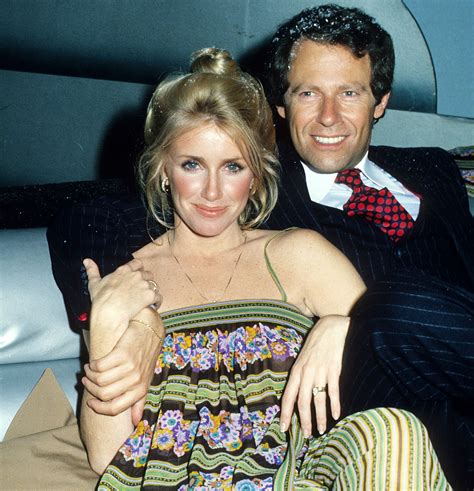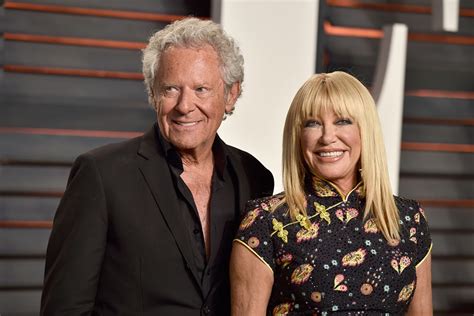
Justin Baldoni’s ongoing legal battle with Blake Lively’s beverage company, Betty Buzz, has taken a contentious turn after Baldoni refused to say “amen” during a mediation session, allegedly derailing settlement negotiations. Baldoni, known for his role in “Jane the Virgin” and his production company Wayfarer Studios, is embroiled in a trademark dispute with Lively’s brand over the use of the name “Betty,” which Wayfarer claims infringes on their pre-existing trademark for their Betty multimedia platform focused on positive masculinity and mental health.
The dispute, which began in 2022, centers around Wayfarer’s claim that Betty Buzz’s branding is confusingly similar to their “Betty” platform, potentially causing consumer confusion and damaging Wayfarer’s brand identity. According to court documents, the mediation session, intended to resolve the conflict amicably, stalled when Baldoni declined to participate in a closing prayer led by Lively’s legal team, stating that he felt it was performative and insincere. This refusal has reportedly exacerbated tensions between the two parties, casting further doubt on the possibility of an out-of-court settlement.
Wayfarer Entertainment, spearheaded by Baldoni, initially filed the lawsuit asserting trademark infringement, unfair competition, and trademark dilution. The company’s legal team argues that the similarities in branding between “Betty Buzz” and Wayfarer’s “Betty” platform could lead consumers to mistakenly believe there is an affiliation or endorsement between the two entities. They also highlight the potential damage to Wayfarer’s reputation, particularly given the platform’s focus on sensitive topics such as mental health and masculinity, which they believe could be undermined by association with an unrelated beverage company.
Betty Buzz, launched by Blake Lively, produces a range of sparkling mixers designed to be paired with alcoholic beverages or enjoyed on their own. Lively has described the brand as a personal project born out of her own need for high-quality, flavorful mixers. The company’s legal team maintains that there is no likelihood of consumer confusion between the two brands, given the distinct products, target audiences, and marketing channels. They argue that Wayfarer’s claims are unsubstantiated and that their use of the name “Betty” is in a completely different commercial space.
The mediation session, which took place earlier this month, was seen as a crucial opportunity for both sides to reach a compromise and avoid a potentially costly and protracted legal battle. However, sources familiar with the proceedings report that the atmosphere became strained when Baldoni objected to the closing prayer. While the specific details of the prayer remain undisclosed, it is understood that Lively’s team routinely incorporates prayer into their business practices and viewed it as a customary gesture of goodwill. Baldoni’s refusal, reportedly based on his perception of its insincerity, was perceived by Lively’s side as disrespectful and further complicated the already delicate negotiations.
The legal battle has garnered significant attention due to the high-profile nature of the individuals involved. Baldoni, a successful actor and producer known for his advocacy on issues of masculinity and mental health, is seen as a prominent voice in Hollywood. Lively, a celebrated actress and entrepreneur, has built a successful career and brand around her personal image and business ventures. The clash between these two figures has added a layer of intrigue to the trademark dispute, drawing media coverage and social media commentary.
The case underscores the complexities of trademark law and the importance of protecting brand identity in a competitive marketplace. Companies invest significant resources in building brand recognition and goodwill, and trademark laws are designed to prevent others from unfairly capitalizing on that investment. However, trademark disputes can be challenging to resolve, particularly when they involve common names or terms, and often require extensive legal analysis and expert testimony.
The outcome of this legal battle could have significant implications for both Wayfarer and Betty Buzz. For Wayfarer, a successful outcome could protect its brand identity and prevent potential consumer confusion. For Betty Buzz, a ruling in favor of Wayfarer could force the company to rebrand its products, a costly and disruptive process. The case also serves as a reminder of the importance of thorough trademark searches and due diligence when launching a new brand or product.
As the legal proceedings continue, both sides are preparing for the possibility of a trial. Wayfarer is expected to present evidence of consumer confusion and damage to its brand reputation, while Betty Buzz is likely to argue that there is no likelihood of confusion and that its use of the name “Betty” is legitimate and non-infringing. The court will ultimately have to weigh the evidence and determine whether Wayfarer’s trademark rights have been violated. The next hearing is scheduled for late November, where both parties will present further arguments and evidence to support their respective positions. The entertainment and legal world will be watching closely to see how this high-stakes battle between Baldoni and Lively unfolds.
Detailed Analysis
The core of the dispute hinges on trademark law, specifically the concept of “likelihood of confusion.” To succeed in its claim, Wayfarer must demonstrate that consumers are likely to be confused between its “Betty” platform and Lively’s “Betty Buzz” beverage company. This involves several factors, including the similarity of the marks, the relatedness of the goods or services, the similarity of the channels of trade, the sophistication of the consumers, and evidence of actual confusion.
Wayfarer argues that the similarity of the name “Betty” is a significant factor, particularly since both brands target a similar demographic – consumers interested in wellness, lifestyle, and entertainment. They also contend that the channels of trade are overlapping, as both brands utilize online marketing and social media to reach their target audience. Furthermore, Wayfarer may attempt to present evidence of actual consumer confusion, such as social media comments or inquiries, to bolster its claim.
Betty Buzz, on the other hand, will likely argue that the products are distinctly different, catering to different consumer needs. They will emphasize that Betty Buzz is a beverage company, while Wayfarer’s “Betty” platform focuses on content creation and community building. They will also argue that the target audiences, while overlapping, are not identical, and that the sophistication of the consumers mitigates the likelihood of confusion. Moreover, Betty Buzz will likely present evidence of its own brand recognition and marketing efforts to demonstrate that consumers are aware of the brand’s distinct identity.
The “amen” incident adds an intriguing, albeit unusual, dimension to the legal battle. While it may not directly impact the legal merits of the trademark dispute, it highlights the level of animosity between the parties and could potentially influence the judge’s perception of their credibility and intentions. Baldoni’s refusal to participate in the prayer, based on his belief that it was insincere, suggests a deep-seated distrust of Lively’s team and a reluctance to engage in what he perceived as performative gestures. This incident could be interpreted as a sign that settlement negotiations are unlikely to succeed and that the case is headed for a trial.
From a legal strategy perspective, both sides are likely to engage in extensive discovery, including depositions, document requests, and expert testimony. Wayfarer may seek to depose Lively and other executives at Betty Buzz to gather information about their branding strategy and marketing efforts. Betty Buzz, in turn, may seek to depose Baldoni and other members of Wayfarer’s team to understand their plans for the “Betty” platform and their rationale for filing the lawsuit. Expert witnesses, such as marketing consultants and trademark attorneys, may be called upon to provide opinions on the likelihood of consumer confusion and the strength of each party’s trademark rights.
The potential outcomes of the case are varied. The court could rule in favor of Wayfarer, finding that Betty Buzz’s use of the name “Betty” infringes on Wayfarer’s trademark rights and ordering Betty Buzz to cease using the name. Alternatively, the court could rule in favor of Betty Buzz, finding that there is no likelihood of consumer confusion and dismissing Wayfarer’s claims. A third possibility is that the court could issue a narrower ruling, such as ordering Betty Buzz to modify its branding or marketing practices to minimize the potential for confusion. Finally, the parties could reach a settlement agreement at any point in the proceedings, which could involve Betty Buzz paying Wayfarer a sum of money, agreeing to rebrand its products, or entering into a co-existence agreement that allows both parties to use the name “Betty” under certain conditions.
The “Baldoni vs. Lively” case serves as a valuable case study in trademark law and brand protection. It highlights the challenges that companies face in protecting their trademarks in a competitive marketplace and the importance of conducting thorough trademark searches and due diligence before launching a new brand or product. It also underscores the potential for disputes to arise even when parties believe that their brands are distinct and non-competing. The outcome of this case will likely have implications for other companies seeking to protect their trademarks and will be closely watched by the legal and business communities. The intersection of celebrity involvement further amplifies the public interest and scrutiny surrounding the proceedings.
Extended Context and Background Information
To fully grasp the nuances of the “Baldoni vs. Lively” case, it is essential to delve into the background of both Wayfarer Entertainment and Betty Buzz, as well as the broader context of trademark law and brand identity.
Wayfarer Entertainment and the “Betty” Platform:
Wayfarer Entertainment, founded by Justin Baldoni, is a production company known for its focus on creating content that promotes social good and inspires positive change. The company has produced films, television shows, and digital content that address issues such as mental health, masculinity, and social justice. The “Betty” platform is a key component of Wayfarer’s mission, serving as a multimedia hub for content and community engagement around the topic of positive masculinity.
Baldoni has been a vocal advocate for redefining traditional notions of masculinity and promoting a more inclusive and empathetic understanding of what it means to be a man. The “Betty” platform reflects this vision, offering articles, videos, podcasts, and other resources that explore topics such as emotional intelligence, vulnerability, and healthy relationships. Wayfarer has invested significant resources in building the “Betty” brand and establishing it as a trusted source of information and support for men seeking to challenge traditional gender norms.
The company’s decision to file a trademark lawsuit against Betty Buzz reflects its commitment to protecting the “Betty” brand and preventing any potential association with products or services that could undermine its mission. Wayfarer is concerned that consumers may mistakenly believe that the “Betty” platform is affiliated with or endorses Betty Buzz, which could dilute the brand’s message and damage its credibility. This concern is particularly acute given the sensitive nature of the topics that Wayfarer addresses on the “Betty” platform.
Betty Buzz and Blake Lively’s Entrepreneurial Venture:
Betty Buzz is a beverage company founded by Blake Lively, offering a range of sparkling mixers designed to be paired with alcoholic beverages or enjoyed on their own. Lively launched the brand out of a personal need for high-quality, flavorful mixers that could be enjoyed by both drinkers and non-drinkers. The company’s products are made with natural ingredients and are marketed as a healthier and more sophisticated alternative to traditional mixers.
Lively has been actively involved in the branding and marketing of Betty Buzz, leveraging her personal image and social media presence to promote the brand. The company has cultivated a strong brand identity, emphasizing quality, taste, and versatility. Betty Buzz products are sold online and in select retail locations, targeting consumers who are interested in premium beverages and entertaining.
Betty Buzz’s legal team maintains that there is no likelihood of consumer confusion between its brand and Wayfarer’s “Betty” platform. They argue that the products are distinctly different, catering to different consumer needs, and that the target audiences, while overlapping, are not identical. They also emphasize that Betty Buzz has invested significant resources in building its own brand recognition and marketing efforts, and that consumers are unlikely to associate the brand with Wayfarer’s platform.
Trademark Law and Likelihood of Confusion:
Trademark law is designed to protect the distinctive signs that businesses use to identify their goods and services. A trademark can be a word, a logo, a design, or any other symbol that distinguishes one company’s products from those of its competitors. The purpose of trademark law is to prevent consumer confusion and ensure that consumers can easily identify and purchase the products they want.
To obtain trademark protection, a company must register its trademark with the relevant government agency, such as the United States Patent and Trademark Office (USPTO). The USPTO will review the application and determine whether the trademark is eligible for registration. One of the key factors that the USPTO considers is whether the trademark is likely to cause confusion among consumers.
The “likelihood of confusion” test involves a multi-factor analysis that considers a variety of factors, including:
- Similarity of the marks: How similar are the trademarks in terms of appearance, sound, and meaning?
- Relatedness of the goods or services: Are the goods or services offered by the two companies related in any way?
- Similarity of the channels of trade: Are the goods or services sold through the same channels of trade, such as online or in retail stores?
- Sophistication of the consumers: Are the consumers who purchase the goods or services sophisticated and knowledgeable about the market?
- Evidence of actual confusion: Has there been any evidence of actual consumer confusion between the two brands?
Courts will weigh these factors to determine whether a “likelihood of confusion” exists, which is necessary for a trademark infringement claim to be successful.
The “Amen” Incident and its Implications:
The “amen” incident during the mediation session has added an unusual element to the legal battle. While it may not directly impact the legal merits of the trademark dispute, it could potentially influence the judge’s perception of the parties’ credibility and intentions.
Mediation is a process in which a neutral third party helps the parties in a dispute to reach a settlement agreement. Mediation sessions are typically confidential and are intended to be a collaborative and constructive process. However, the “amen” incident suggests that the mediation session between Wayfarer and Betty Buzz was anything but collaborative.
Baldoni’s refusal to participate in the prayer, based on his belief that it was insincere, suggests a deep-seated distrust of Lively’s team and a reluctance to engage in what he perceived as performative gestures. This incident could be interpreted as a sign that settlement negotiations are unlikely to succeed and that the case is headed for a trial. It could also be seen as a reflection of the different values and worldviews of the parties involved.
FAQ Section:
1. What is the central issue in the legal dispute between Justin Baldoni and Blake Lively?
The legal dispute primarily revolves around trademark infringement. Baldoni’s company, Wayfarer Entertainment, claims that Lively’s beverage company, Betty Buzz, is using a name (“Betty”) that is confusingly similar to Wayfarer’s “Betty” platform, which focuses on positive masculinity and mental health. Wayfarer argues this could lead to consumer confusion and damage their brand.
2. Why did Justin Baldoni refuse to say “amen” during the mediation session?
According to reports, Justin Baldoni refused to say “amen” during the mediation session’s closing prayer because he felt the gesture was performative and insincere. This refusal reportedly heightened tensions between the two parties, hindering potential settlement negotiations.
3. What is Wayfarer Entertainment’s “Betty” platform, and what is its purpose?
Wayfarer Entertainment’s “Betty” platform is a multimedia hub dedicated to promoting positive masculinity and mental health. It offers articles, videos, podcasts, and other resources aimed at redefining traditional notions of masculinity and fostering emotional intelligence, vulnerability, and healthy relationships.
4. What is Betty Buzz, and what products does it offer?
Betty Buzz is a beverage company founded by Blake Lively that produces a range of sparkling mixers. These mixers are designed to be paired with alcoholic beverages or enjoyed on their own and are marketed as a healthier, more sophisticated alternative to traditional mixers.
5. What are the potential outcomes of the “Baldoni vs. Lively” trademark infringement case?
Several outcomes are possible. The court could rule in favor of Wayfarer, ordering Betty Buzz to cease using the name “Betty.” Alternatively, the court could rule in favor of Betty Buzz, dismissing Wayfarer’s claims. A narrower ruling could also be issued, requiring Betty Buzz to modify its branding to minimize potential confusion. Lastly, the parties could reach a settlement agreement involving financial compensation, rebranding efforts, or a co-existence agreement.
6. What legal arguments are Wayfarer likely to use in court?
Wayfarer is likely to argue that the similarity of the names “Betty,” the overlapping target demographics, and similar marketing channels create a likelihood of consumer confusion. They may also present evidence of actual consumer confusion and argue that Betty Buzz’s use of the name dilutes their trademark and harms their brand reputation, particularly given their focus on sensitive topics.
7. What legal arguments is Betty Buzz likely to use in court?
Betty Buzz is likely to argue that their product (beverages) is distinctly different from Wayfarer’s content platform, and that the target audiences, while overlapping, are not identical. They’ll likely emphasize their own brand recognition and marketing efforts and argue that sophisticated consumers would not confuse the two brands. They may also contend that Wayfarer’s trademark is weak or descriptive and therefore not entitled to broad protection.
8. What is the significance of the “likelihood of confusion” test in trademark law?
The “likelihood of confusion” test is crucial because it determines whether a trademark has been infringed. To succeed in a trademark infringement claim, the plaintiff must prove that consumers are likely to be confused about the source or affiliation of the goods or services due to the similarity of the trademarks.
9. What role do expert witnesses play in trademark infringement cases?
Expert witnesses, such as marketing consultants and trademark attorneys, provide opinions on the likelihood of consumer confusion and the strength of each party’s trademark rights. They can analyze market data, consumer surveys, and branding strategies to support their expert opinions, which can be persuasive evidence for the court.
10. How could the “amen” incident potentially impact the legal proceedings, if at all?
While the “amen” incident may not directly influence the legal merits of the trademark dispute, it highlights the level of animosity between the parties and could affect the judge’s perception of their credibility and intentions. It may also indicate that settlement negotiations are unlikely to succeed and the case is more likely to proceed to trial.
11. What factors influence the likelihood of a settlement in a trademark dispute? Several factors can influence the likelihood of a settlement, including the strength of each party’s legal case, the potential costs and risks of litigation, the parties’ willingness to compromise, and the availability of alternative dispute resolution methods like mediation. In this particular case, the apparent animosity between Baldoni and Lively, as evidenced by the “amen” incident, may make a settlement less likely.
12. What implications could this case have for other companies in the entertainment and beverage industries? The case serves as a reminder of the importance of thorough trademark searches and due diligence before launching a new brand or product. It also underscores the potential for disputes to arise even when companies believe their brands are distinct and non-competing. The outcome could set a precedent for how courts interpret the “likelihood of confusion” test in cases involving similar names but different products or services.
13. How much has each company invested in branding and marketing, and how does this affect the case? The investment each company has made in branding and marketing is a significant factor. Wayfarer’s investment in the “Betty” platform demonstrates their commitment to building brand recognition and goodwill. Similarly, Betty Buzz’s investment in marketing and brand development shows their efforts to create a distinct brand identity. The extent of these investments and the success of each company’s branding efforts will likely be considered by the court when determining the likelihood of consumer confusion.
14. What are the potential costs associated with a trademark infringement lawsuit, for both parties? The costs associated with a trademark infringement lawsuit can be substantial. These costs include attorney’s fees, expert witness fees, court filing fees, and discovery costs (e.g., depositions, document production). For both Wayfarer and Betty Buzz, the legal fees alone could amount to hundreds of thousands of dollars, and the potential for reputational damage and lost business opportunities also represents a significant cost.
15. How does the fame and public image of Justin Baldoni and Blake Lively affect the case? The fame and public image of Justin Baldoni and Blake Lively add a layer of intrigue to the trademark dispute and draw significant media attention. Their high profiles can influence public perception of the case and potentially impact consumer behavior. The involvement of celebrities can also increase the pressure on both parties to resolve the dispute quickly and avoid negative publicity. The case highlights the intersection of law, business, and celebrity culture.
16. What are some possible resolutions besides winning or losing the case? Possible resolutions beyond a clear win or loss include a settlement where Betty Buzz pays Wayfarer a licensing fee to continue using the name “Betty,” a co-existence agreement that outlines specific restrictions on how each company can use the name, or a requirement for Betty Buzz to change its branding in a way that sufficiently distinguishes it from Wayfarer’s “Betty” platform. Mediation or arbitration could also lead to a compromise that satisfies both parties.
17. What role does social media play in trademark disputes and this particular case? Social media plays a significant role in trademark disputes by providing a platform for companies to promote their brands, interact with consumers, and monitor potential infringements. In this case, both Wayfarer and Betty Buzz likely use social media extensively for marketing and brand building. Social media comments and inquiries could also serve as evidence of actual consumer confusion, which Wayfarer could present in court. Furthermore, the media attention generated by the high-profile individuals involved has amplified the discussion of the case on social media.
18. How is trademark dilution different from trademark infringement, and is it relevant here? Trademark infringement occurs when a company uses a trademark that is confusingly similar to another company’s registered trademark, leading to consumer confusion. Trademark dilution, on the other hand, occurs when a company’s use of a trademark weakens the distinctiveness of a famous trademark, even if there is no likelihood of consumer confusion. Wayfarer is alleging both trademark infringement and trademark dilution, arguing that Betty Buzz’s use of “Betty” diminishes the unique identity of their “Betty” platform. Dilution claims are often more difficult to prove than infringement claims, as they require demonstrating that the plaintiff’s trademark is famous and that the defendant’s use of the mark is likely to lessen its distinctiveness.
19. If Wayfarer wins the case, what are the potential long-term consequences for Betty Buzz?
If Wayfarer wins the case, Betty Buzz could be forced to rebrand its products, which could be a costly and disruptive process. They might also have to pay damages to Wayfarer for trademark infringement. The long-term consequences could include a loss of brand recognition, a decrease in sales, and damage to the company’s reputation. They may also need to destroy existing inventory with the infringing mark.
20. What steps could Betty Buzz have taken to avoid this trademark dispute in the first place? To avoid this trademark dispute, Betty Buzz could have conducted a thorough trademark search before launching its brand to identify any existing trademarks that were similar to its proposed name. They could have also consulted with a trademark attorney to assess the risk of infringement and develop a branding strategy that minimized that risk. They could have considered using a more distinctive name or logo to differentiate their brand from others in the market.









